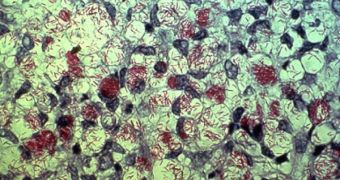Even with all the progress medicine has made over the past decades, leprosy still remains an incurable disease if it's not diagnosed early. Throughout history, Mycobacterium leprae has ravaged continents, and especially Europe, during the Great Plague. Thousands of people died at the time, while the outbreak died by itself, not due to medical treatment.
The terrible affliction was considered extinct in civilized, developed countries, and experts believed that it could only still be found in third-world nations, where access to medical care was scarce and the living conditions deplorable. However, medical statistics in the United States show that some 150 cases of M. leprae infections are detected yearly, with approximately 3,000 people being currently under treatment.
Leprosy acts by damaging the peripheral nervous system, as well as the motor skills, which makes people suffering from it experience increased numbers of accidents, such as cuts and burns, as the feeling in their fingers and toes gradually fades away, and the extremities of the limbs become shorter and curved.
"We believe there are more cases of leprosy not identified due to the lack of awareness about the disease among physicians in the U.S., which is leading to misdiagnoses and wrong treatments for patients who are left to suffer with the debilitating damage caused by this disease. As we see leprosy move toward internal regions of the States, it becomes more urgent to reach those physicians to let them know about the symptoms of this disease," says Health Resources Service Administration's National Hansen's Disease Program (NHDP) director, James Krahenbuhl, PhD.
As the pathways M. leprae uses to change hosts are still unknown, health experts emphasize the importance of physicians being able to recognize early signs of the disease, and not mistake it for regular fungus or ringworm infections. In addition, it takes between 3 and 10 years for the symptoms of the disease to point out exactly what the patient is suffering from.
Higher degrees of awareness among physicians, especially those working with poor people, in free clinics and emergency rooms, could lead to the complete eradication of this disease, as drugs only affect its development until the bacteria starts attacking the nervous system, after which time any medical intervention is useless.

 14 DAY TRIAL //
14 DAY TRIAL //